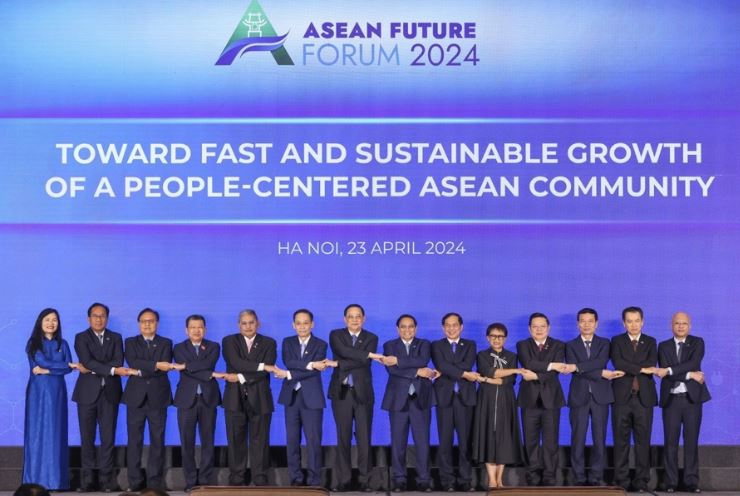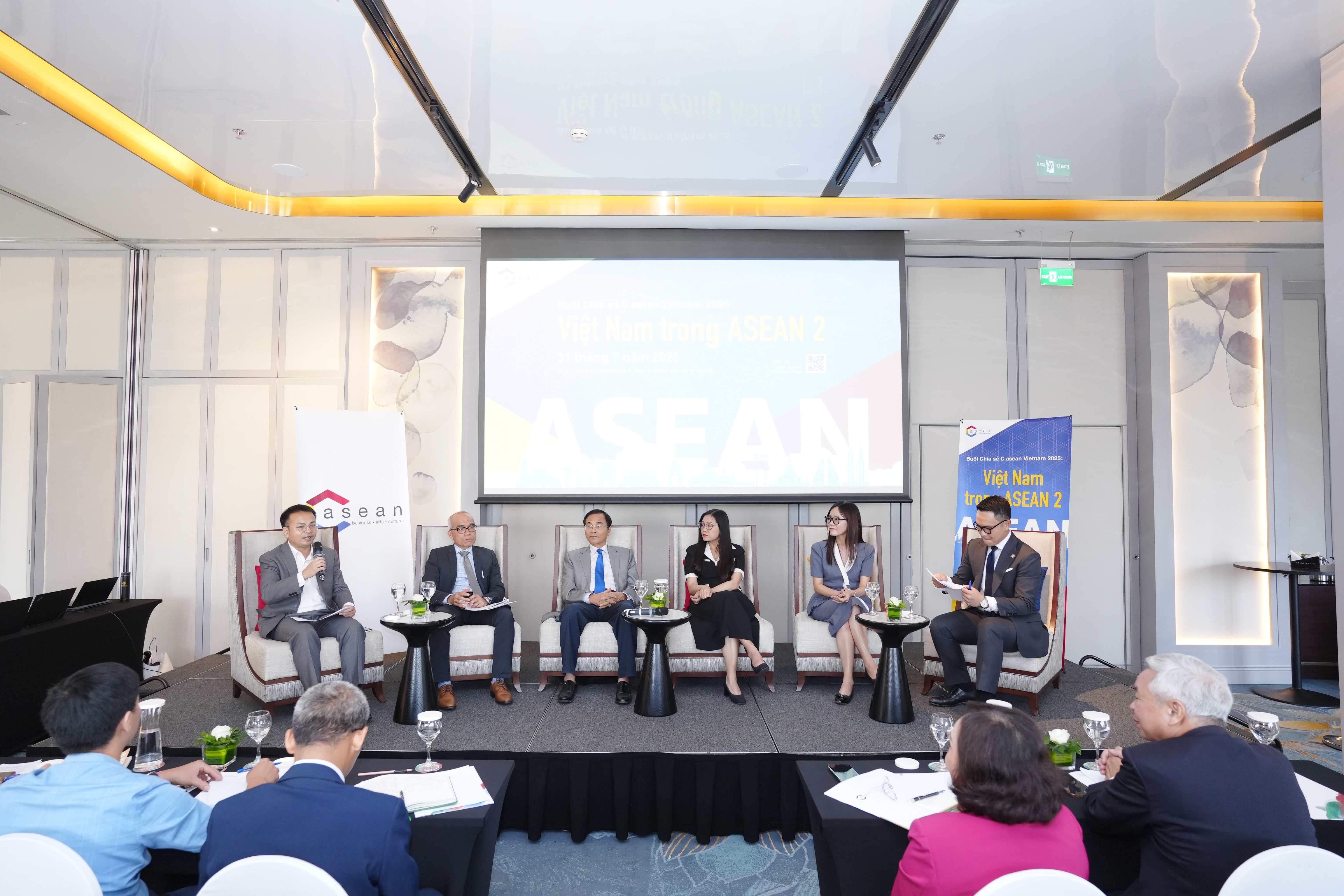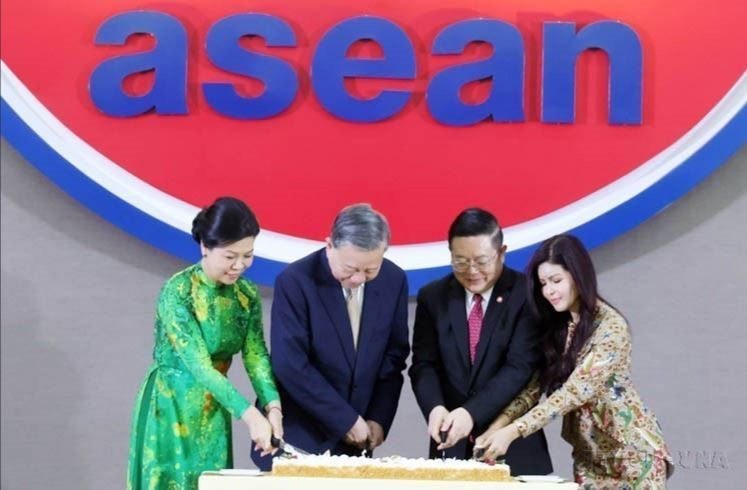On July 28, 1995, Vietnam proudly celebrated its entry into ASEAN as the bloc’s seventh member, with the red flag bearing a yellow star soaring high in Brunei’s skies. That historic moment was more than just a ceremonial milestone, it was a bold step towards deeper regional integration and shared prosperity. Over the 30 years since, Vietnam has remained steadfast in its commitment to being an active, proactive, and responsible member of ASEAN. From participating in all key initiatives to taking the lead in shaping policies, it has helped forge a stronger, more resilient and cohesive ASEAN Community.
In a region as dynamic and diverse as Southeast Asia, Vietnam has been a driving force behind efforts to foster multilateral cooperation, opening up new economic and trade opportunities across borders. By championing peace, stability, and sustainable growth, Vietnam continues to contribute meaningfully to ASEAN’s shared vision of a connected, prosperous, and peaceful future.

From integration to leadership
At the “C asean Vietnam 2025 Sharing Session: Vietnam in ASEAN 2”, held on July 31 in Hanoi, experts agreed that Vietnam’s decision to join ASEAN was a strategic turning point that elevated the country’s global standing. Guided by a consistent commitment to being proactive, active, and responsible, Vietnam has turned ASEAN integration into a powerful catalyst for growth and international engagement.
According to Associate Professor Le Bo Linh, former Vice Chairman of the National Assembly’s Science, Technology and Environment Committee and former Head of the Institute for Southeast Asian Studies, Vietnam played a crucial role in supporting the accession of Laos, Myanmar, and Cambodia, helping realize the long-held vision of a full ASEAN-10. Vietnam has remained a firm advocate for the principle of consensus and has often stepped up as a bridge-builder and mediator, helping maintain ASEAN’s centrality in the region’s political and security landscape.
Vietnam’s influence goes beyond diplomacy. As global supply chains shifted and multinational companies looked beyond China, Vietnam emerged as a key player, offering both capacity and stability. Across its three terms as ASEAN Chair - in 1998, 2010, and notably in 2020 - Vietnam demonstrated leadership in times of uncertainty. The 2020 Chairmanship stood out for spearheading the COVID-19 ASEAN Response Fund and initiating the creation of a regional reserve of medical supplies, significantly enhancing ASEAN’s collective capacity to respond to crises. These efforts reflect a broader lesson: initiative and meaningful participation are essential to creating lasting impact.
Vietnam’s approach has never been passive. Instead, it has actively contributed to ASEAN’s shared agendas, gradually building the country’s voice and position on the international stage. Its pursuit of an independent and self-reliant foreign policy, even amid complex and sometimes competing interests, has enabled Vietnam to maintain strategic balance while safeguarding national priorities. Through a policy of diversification and multilateralism, Vietnam has skillfully navigated relations with major powers while advancing its long-term goals. By combining national resilience with opportunities from global integration, Vietnam has strengthened its internal capacity while contributing solutions to regional and global issues.
Critical to this journey has been thorough preparation and effective coordination between ministries, agencies, and local authorities, which created favorable conditions for Vietnam to take on key responsibilities within ASEAN. The lessons drawn from this process offer not only immediate relevance but also a strong foundation for sustainable development moving forward.
From a security perspective, Lieutenant Colonel Nguyen Thanh Binh, Head of the Southeast Asia, West Asia, and South Asia Division at the Ministry of Public Security, highlighted Vietnam’s increasingly active and responsible role in ASEAN’s political-security cooperation. He noted that despite the ongoing regional and global uncertainties, ASEAN has maintained cohesion and unity, preserving its central role in shaping the region’s strategic landscape. Vietnam has played a constructive part in this process, especially in promoting collaboration on non-traditional security issues.
At the 46th ASEAN Summit in Malaysia last May, regional leaders adopted the ASEAN Community Vision 2045, a strategic blueprint for the region’s development over the next 20 years. This Vision builds upon an initiative first proposed by Vietnam during its ASEAN Chairmanship 2020, once again affirming its role as a proactive and visionary contributor to building a resilient, innovative, and people-centered ASEAN. This, according to Lieutenant Colonel Binh, opens up new opportunities for Vietnam to further shape and support a more connected, dynamic, and secure regional community.

Cultivating growth beyond trade
In terms of trade, ASEAN, with its population of about 650 million, is a crucial partner for Vietnam. This perspective was shared by Ms. Le Thi Mai Anh, Head of the Division for Southeast Asia, South Asia & Regional Cooperation at the Ministry of Industry and Trade. ASEAN ranks as Vietnam’s third-largest trading partner after China and the US. In 2024, bilateral trade totaled approximately $83.9 billion, with annual growth consistently maintained at 14-15 per cent. In the first half of 2025, trade surpassed $45 billion, indicating that maintaining this growth rate will likely result in a new record by year-end.
With over 98 per cent of intra-bloc tariffs eliminated and a strong export surplus to neighboring markets, ASEAN offers highly favorable conditions for Vietnamese goods to penetrate deeper into the region. “ASEAN has always been regarded as both a traditional and strategic market for Vietnam, especially amid the current global economic uncertainties,” Ms. Mai Anh noted. She emphasized that geographic and cultural proximity between Vietnam and ASEAN countries is a key advantage, particularly in trade, where distance often plays a crucial role in market connectivity and growth.
Thailand is currently Vietnam’s largest trading partner in ASEAN, with bilateral turnover reaching $20.2 billion in 2024. Laos and Cambodia have also witnessed remarkable growth. Though Laos’ trade volume with Vietnam is still modest, at $2.25 billion in 2024, its impressive 38 per cent growth rate marks the first time the figure has exceeded $2 billion. The target now is to maintain annual growth of at least 10 per cent. Cambodia, too, has seen increasing attention and bilateral trade promotion efforts, clearly reflected through recent cooperation and engagement activities.
Other smaller markets such as Myanmar, Brunei, and Timor-Leste also play niche roles. These are promising destinations for Vietnam’s emerging industries such as Halal products, logistics, renewable energy, and construction. “We value every ASEAN market, as each brings unique contributions and strategic significance to Vietnam’s regional cooperation and development agenda,” Ms. Mai Anh affirmed.
To support businesses in accessing ASEAN markets, Vietnam has implemented a range of comprehensive solutions. These include improving legal frameworks, effectively executing ASEAN-related FTAs, and negotiating supplemental bilateral agreements such as the Vietnam-Laos Bilateral Trade Agreement, the Vietnam-Cambodia Trade Promotion MoU, a rice trade cooperation MoU with the Philippines, Halal cooperation with Malaysia, and digital trade initiatives with Indonesia.
Amid growing technical barriers and intense competition, Ms. Mai Anh stressed the importance of digital transformation and technological adoption in trade and logistics. Strengthening digital trade with ASEAN, enhancing FTA implementation capacity, standardizing goods, and expanding flexible bilateral cooperation are crucial to positioning Vietnam as a dynamic trade hub within the region.
While trade remains the backbone of Vietnam’s economic engagement with ASEAN, agriculture stands as a key pillar of regional collaboration, both in ensuring food security and in driving sustainable, inclusive growth. As Vietnam deepens its trade ties within the bloc, its agricultural sector is also evolving in tandem with ASEAN’s broader agenda for resilience, innovation, and green transformation.
Over 30 years of ASEAN membership, Vietnam’s agriculture sector has transformed dramatically, from a food-deficient country to one of the world’s leading exporters of rice, coffee, cashew nuts, tropical fruit, and seafood. According to Mr. To Viet Chau, Deputy Director of the Department of International Cooperation at the Ministry of Agriculture and Environment, agriculture remains a cornerstone of national food security, social stability, and livelihoods, contributing 12 per cent of GDP in 2023 and employing nearly 40 per cent of the rural workforce.
Vietnam has taken a leadership role in ASEAN’s food security agenda, initiating the ASEAN Integrated Food Security (AIFS) Framework and Strategic Plan of Action on Food Security (SPA-FS) for 2021-2025. The country also advocates new technological adoption, including AI, hydrogen energy, and clean agriculture, to align with regional priorities such as Laos’ 2024 Declaration and ASEAN’s green transition goals.
Other initiatives include biomass energy projects, rural industry development, emergency reserve funds, and the ASEAN Food Security Information System (AFSIS) to support crisis preparedness and response. Vietnam continues harmonizing with international frameworks like the Paris Agreement and JETP to promote traceable, green Vietnamese agricultural exports. At the same time, it faces challenges like climate change, resource depletion, and disparities in digital infrastructure across ASEAN. These call for stronger cross-sector cooperation, sustainable agro‑tech advancement, and stronger institutional capacity to ensure long-term food security and competitiveness.
As ASEAN continues its journey towards greater integration and resilience, Vietnam remains firmly committed to advancing a community rooted in peace, prosperity, and sustainable development. With three decades of shared progress, the road ahead holds even greater promise, one that Vietnam is ready to walk together with its regional partners, stronger and more united than ever.









 Google translate
Google translate